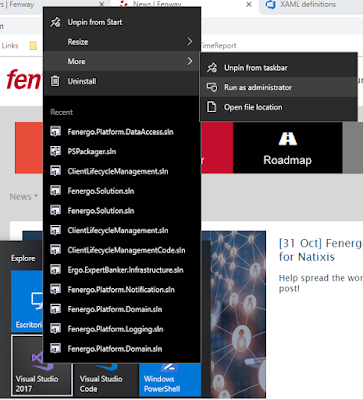Script to clean your Visual Studio solution folder

Sometimes, cleaning your solution folder comes in handy when you want to build from scratch. If you don't do so, you can have unexpected results because of the files generated by your previous builds. To carried out the cleaning task, I use a simple script which allows me to configure a list of folders I want to remove. This script is divided in two parts. The first part is just a script to check if we have admin permissions. If not, it will display a pop-up to get admin permissions. You can skip this part, but it is very handy, since the cleaning part might need admin permissions. This part can be very useful for all your scripts, which need admin permissions. :: BatchGotAdmin :------------------------------------- REM --> Check for permissions IF "%PROCESSOR_ARCHITECTURE%" EQU "amd64" ( >nul 2>&1 "%SYSTEMROOT%\SysWOW64\cacls.exe" "%SYSTEMROOT%\SysWOW64\config\system" ) ELSE ( >nul 2>&1 "%SYSTE...





